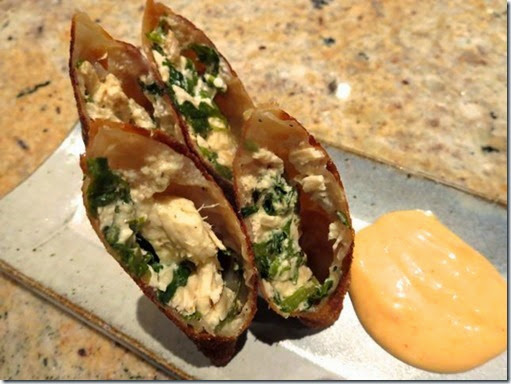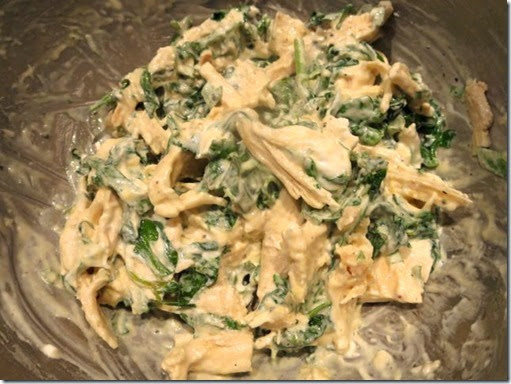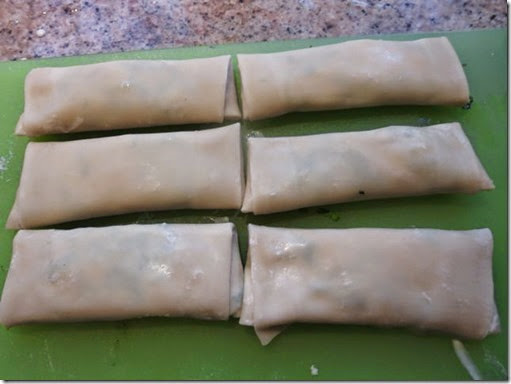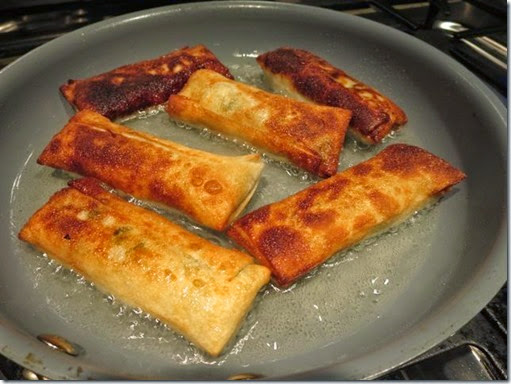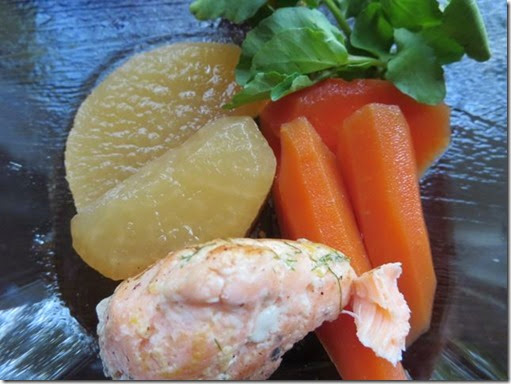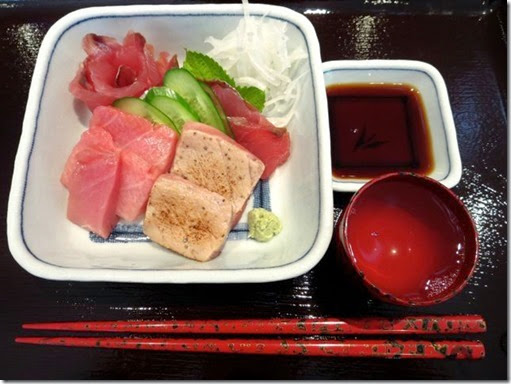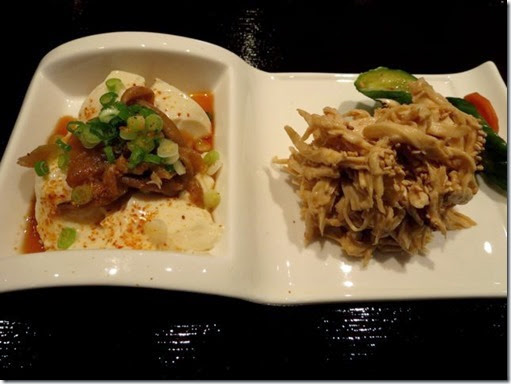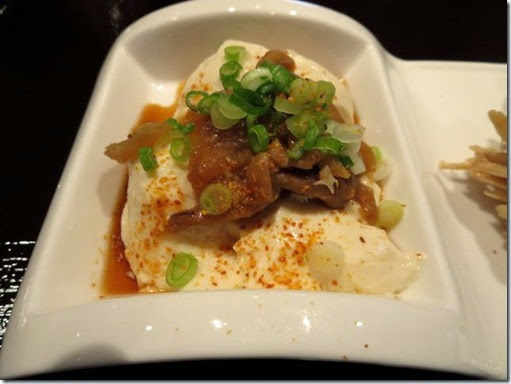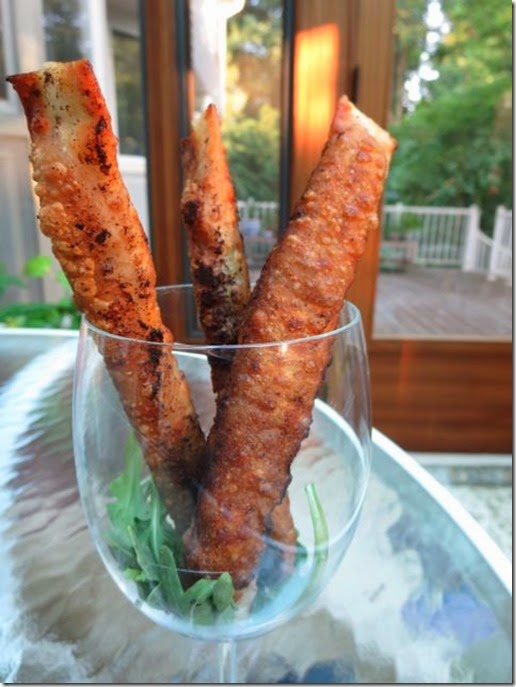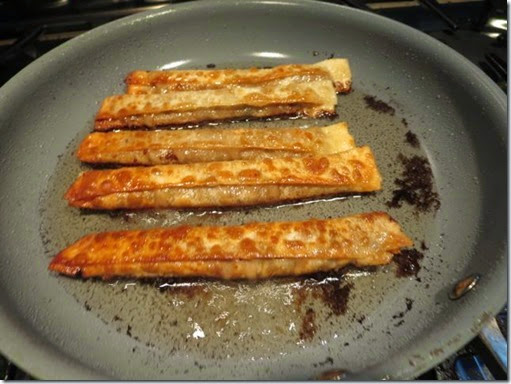This is another
sous vide dish. In our regular grocery store, I spotted halibut which looked good and I bought about 1 1/3 lb fillet. I usually do not bother with halibut since it is a rather boring white meat fish but this time I wanted to cook it sous vide.
I served sous vide halibut with salsa I made the day before and shiitake asparagus risotto.
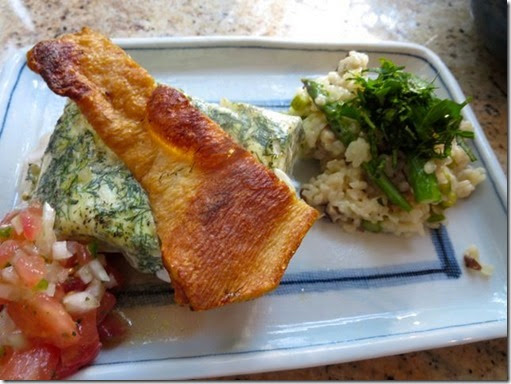
I removed the skin and cooked crisp and brown separately and served it on the top.
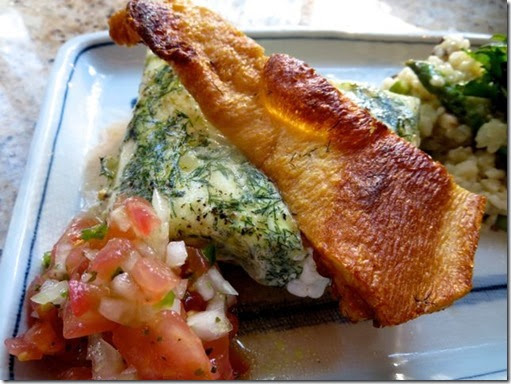 Halibut
Halibut: From the 1 1/3 lb fillet, I removed the skin and made two equal sized portions. I seasoned them with salt and pepper, zest of lemon (micro-graded) and finely chopped fresh dill (we now have a forest of dill plants in our herb garden and have to use it).
I placed two thin pats of cold butter (unsalted) on either side of the fillets and vacuum sealed (left upper in the picture below). An appropriate sous vide temperature is a bit difficult to determine but I wanted to be safe and chose 135F which is above the pasteurization temperature (130F). In retrospect, I could have gone a bit lower (may be 132F). I cooked sous vide for 30 minutes. You could see that the butter has melted and the meat has become opaque just over 10 minutes into cooking (left lower). After 30 minutes were up the fish meat was totally opaque (Please compare the semitransparent appearance in the left upper picture)
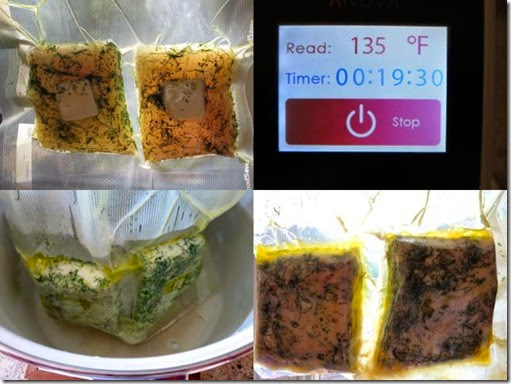
When I took the fish out of the pouch, the surface had a thin smooth shiny layer of congealed protein and the markings of the vacuum sealed plastic bag on it. This looked like it was made out of plastic and didn’t make it look particularly appetizing; one of the problems of sous vide cooked fish. So, I decided to quickly sear both sides so that the congealed protein would melt during the searing (I was not aiming to make it brown or crispy).
Skin: I removed the skin and cooked it separately. I patted try dry and salted it. I placed it in a non-stick frying pan with a small amount of olive oil on low flame, skin side down. I covered it by nesting an identical frying pan with its bottom covered with an aluminum foil to prevent the skin to curl up and also splattering. After 7-10 minutes, I flipped the skin over and cooked another 5 minutes and placed it on a paper towel lined plate. I cut it into two strips and served them over each of the fillets of cooked halibut.
Salsa: I skinned and cut two small tomatoes into small cubes. I finely chopped Vidalia onion (1/2 medium),
jalapeño pepper (1, seeded and veined) and mixed in. Since I did not have fresh cilantro, I used dried (1/2 tsp). I seasoned it with salt and pepper. I then added lemon juice (from one lemon) and olive oil (1 tbs). I mixed and let it stand (at least for several hours).
Risotto: This was an quick risotto from previously cooked and frozen rice (1/2 cup). I used another half of Vidalia onion from making salsa, (1/2 medium, finely chopped) and fresh shiitake mushrooms (4-5, stem removed and finely chopped) and green asparagus (4 stalks, peeled and blanched) with stalk finely chopped and the spear heads set aside. I did
mise en place and my wife cooked the risotto.
She first sautéed the onion, mushroom and asparagus (except for the spear heads), seasoned with salt and pepper. After few minutes, she added the defrosted rice and kept stirring until the rice kernels were well coated. She added Japanese sake (or white wine, 5 tbs) and let it evaporate as you stir to almost all incorporated. She then added chicken broth (low-salt, non-fat Swanson chicken broth) in increments as she stirred until it attained creamy consistency (3-4 increments, probably close to 1 cup total). When no more free fluid was present, she added a few pats of butter. After the butter incorporated, she added grated Parmesan cheese and the spear heads of asparagus.
The halibut was nicely flakey and completely cooked. Although the fish itself is rather boring, the dill and lemon scented butter flavors came through and the texture was very nice. The addition of the salsa (this one came out rather spicy due to the jalapeño I used) spiked up the flavor. Of course, you cannot go wrong with crispy skin which we picked up with our fingers and enjoyed. The risotto was, of course, not
al-dente (actually we do not like undercooked risotto) but very creamy with nice flavors (I garnished with thin strips of fresh basil).
Compared to salmon, halibut does not have a strong flavor or oily texture. It does have a nice subtle flavor which can be enhanced by other seasonings and flakey texture. This was probably the best halibut we ever tasted. Compared to oily fish like salmon, I could go with a slightly lower temperature to make it a bit less dry. I’ll try that next time.
